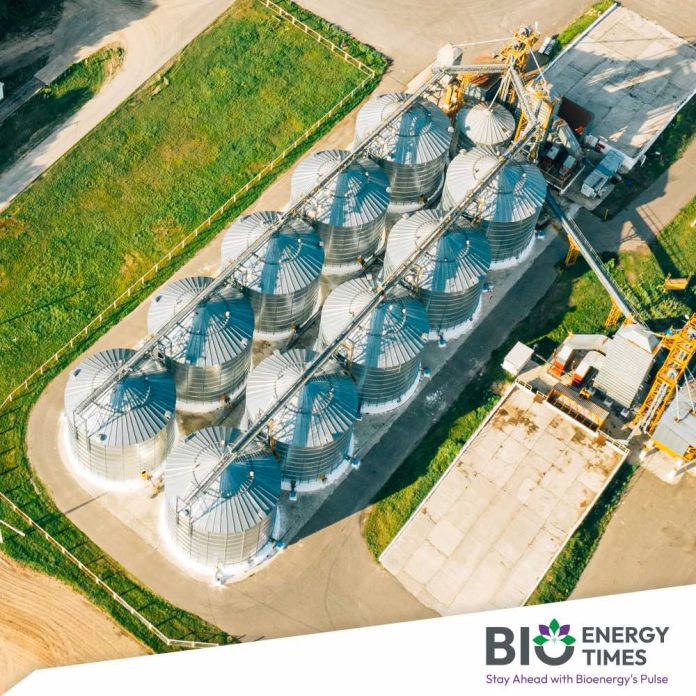The American Biogas Council (ABC) has shared new data showing that 2024 was another record-breaking year for the biogas industry. In the 12 months ending in December, 125 new biogas projects started operating, bringing in over $3 billion in new investments across the U.S., reports Waste Today.
The number of new projects in 2024 was 17% higher than in 2023, and the total investment in these projects increased by 40% compared to the previous year.
Biogas projects turn materials like manure, wastewater, food waste, and landfill gas into renewable natural gas (RNG), renewable electricity, heat, and natural fertiliser. According to ABC, these sectors produced over 10% more biogas in 2024 than in any previous year.
With last year’s new projects, the total number of biogas facilities in the U.S. has reached nearly 2,500. These facilities produce almost 1.4 million standard cubic feet per minute (scfm) of biogas, a reliable source of renewable energy.
This energy output is equivalent to the power generated by solar panels covering 15,000 football fields, enough electricity to power 2.4 million homes for a year, or the fuel needed to remove 2.6 million gasoline-powered cars from the road. Biogas has a carbon intensity 50% to 700% lower than fossil fuels because it captures methane emissions that would otherwise be released into the atmosphere and uses them to replace emissions from fossil fuels and chemical fertilisers.
Patrick Serfass, Executive Director of the American Biogas Council, said, “The biogas industry keeps growing because it provides clean electricity, reduces pollution, and manages waste from farms and cities. In a time of rising energy demand, constrained fertiliser markets, and the push for energy independence, biogas offers reliable energy and locally produced fertiliser.”
Landfill gas (LFG) projects, which capture biogas from decomposing organic waste, produce 72% of the total biogas output in the U.S., even though there are fewer LFG facilities compared to wastewater and agriculture projects. In 2024, 24 new LFG projects were added, bringing the total to 580 facilities, a 4.3% increase. These new projects represent $1.4 billion in investment or 47% of the total capital invested in biogas projects in 2024. LFG output grew by over 12% in 2024, reaching about 980,000 scfm.
While many new LFG projects upgrade biogas to RNG, 77% of all biogas projects still produce electricity.
The agriculture sector saw significant growth in 2024, with 93 new farm-based biogas projects compared to 24 landfill projects. For the first time, the total number of farm biogas projects surpassed landfill gas projects. These new farm projects represent $1.37 million in investment, mostly in rural communities, and a 24% increase over 2023. The agriculture sector now has 615 biogas projects, up nearly 18% from 522 in 2023, with new projects adding 21,000 scfm of biogas output.
Hog farms contributed 29 new facilities, making up 31% of all new farm projects. Farmers are increasingly finding efficient ways to use manure for biogas production.
In 2024, 95% of new biogas projects used their biogas to produce RNG. On farms, RNG projects now outnumber biogas-to-electricity projects by about 3 to 2.
The wastewater sector, which has the most biogas facilities (47% of all systems), did not see aggressive growth in 2024 but remains a key player. Some of the oldest biogas systems in the U.S., dating back to the 1920s, are at wastewater plants that use anaerobic digestion to manage sludge.
Standalone food waste projects are the least common due to their complexity, but three new projects were added in 2024, bringing the total to 114. Additionally, about 200 agriculture and wastewater facilities now process food waste alongside manure or wastewater. The food waste sector is expected to grow in 2025, with 16 projects currently under construction.
Of the 125 new biogas projects in 2024, 119 (95%) were built to produce RNG. This trend has been strong since 2018, driven by programs like California’s Low Carbon Fuel Standard and the federal Renewable Fuel Standard, which reward renewable fuel production. However, electricity remains the dominant use for biogas, with 77% of projects and 60% of total biogas output going to renewable power.
Biogas projects operate in every U.S. state, as organic waste is found everywhere. Agriculture-heavy states have seen significant investments due to the growth in farm-based projects. In 2024, California, Illinois, South Dakota, Pennsylvania, and Virginia attracted the most investment. In 2023, Michigan, Indiana, Virginia, Ohio, and Texas led in capital expenditure.
Americans send over 1.4 billion tons of manure, 33 million tons of inedible food waste, and 1 million tons of wastewater sludge to landfills each year. Additionally, 470 landfills currently flare gas that could be captured for biogas production.














